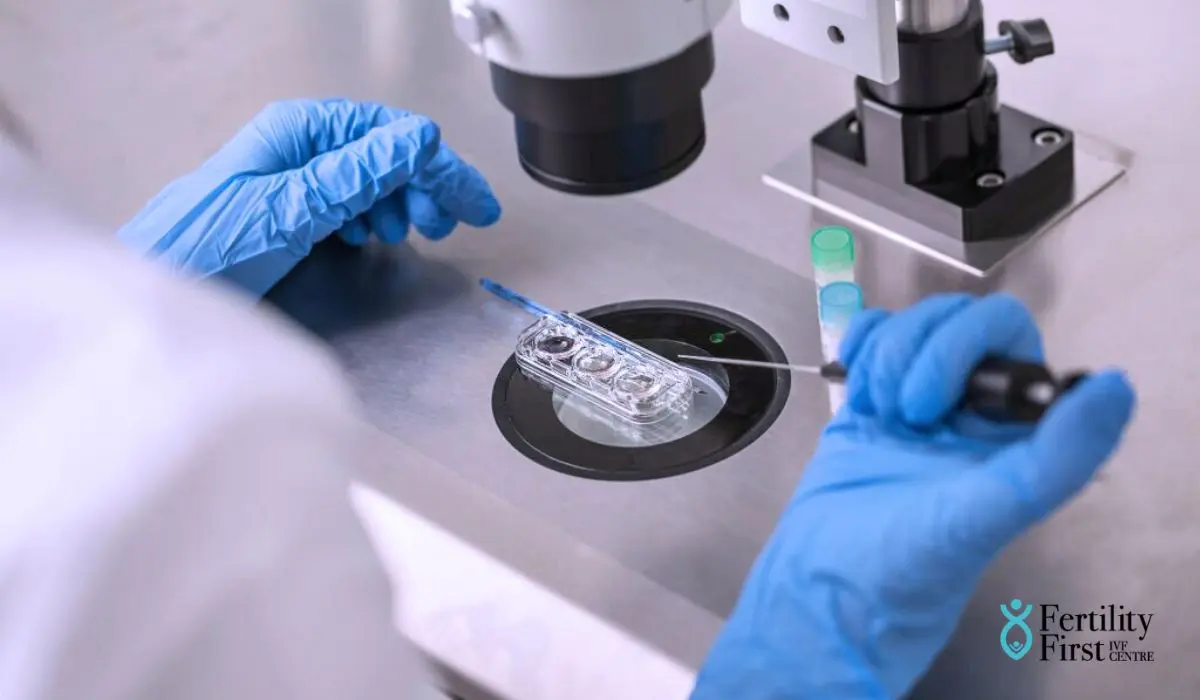What Is A Test Tube Baby?Exploring the Science And Process

Having a child and starting a family is a dream of every couple. Most of them do not anticipate that conceiving a baby, which appears to be easy for many, will be challenging or even impossible for them. According to the World Health Organization (WHO), about 17.5% of the world’s adult population is affected by infertility. However, there are certain medically proven technologies like in vitro fertilization (test tube baby) and intrauterine insemination to assist you in fulfilling your dream of becoming a parent. This article will discuss one such treatment called test tube baby, its benefits, procedures, and everything about it.
Test Tube Baby: What Is It?
The term test tube baby was first used in 1978 with the successful birth of Louise Joy Brown in England with the help of the Assisted Reproduction Technique (ART) under Sir Robert Edward and Dr. Patrick Steptoe.

The term test tube baby was originally used to refer to babies born from the earliest application of artificial insemination but has now expanded to refer to children born from in vitro fertilization. In this procedure, the embryo is conceived in a test tube rather than the woman’s fallopian tube. That is, unlike the normal pregnancy, where fertilization happens inside the woman’s body, the sperm and egg are fertilized outside the body in a laboratory using medical intervention. But you must understand that whether the baby is called an IVF baby or a test tube baby, it is still human and as natural as us in all its forms.
What Are The Processes Involved?
There have been a lot of advancements in the IVF technique ever since the first successful attempt in 1978. However, the basic techniques remain the same, which involves the following steps.
- Ovarian stimulation and egg production: At first, certain medications are given to the women for a period of 2 weeks to suppress the natural menstrual cycle. After the cycle is suppressed, hormonal medications like follicle-stimulating hormones (FSH), and luteinizing (LSH) are injected into the woman’s body to stimulate her ovaries. Generally, per menstrual cycle that happens every month only one egg is released from the ovaries. So, by stimulating the ovaries, we can harvest as many eggs as possible from the ovaries. An injection of gonadotropin-releasing hormone (GnRH) is then injected halfway through the cycle to prevent early ovulation. The next few weeks after the intake of these medications will be monitored. Human chorionic gonadotropin (hCG) is injected to complete the final stage of egg maturation.
- Egg retrieval: After the eggs mature, we will then move on to the next phase, which is called the egg retrieval stage. The standard retrieval should be conducted in 34-36 hours followed by the hCG intake. Before the eggs ovulate, we have to remove the eggs from the follicles. Transvaginal ultrasound aspiration is the common method opted by doctors to retrieve eggs. Here, the ultrasound probe with an attached needle is introduced into the vagina to identify the follicle. Then the needle is passed through the vaginal opening to the follicle. Finally, we collect the eggs using the suction device that is attached to the needle.
- Sperm collection: The male partner has to submit a fresh sample of semen on the same day of egg retrieval. After collecting the semen sample, it then undergoes a procedure called sperm cleaning. This procedure involves the removal of the dormant cellular materials and seminal fluid.
- Fertilization: Within the next few hours, the retrieved eggs and the sperm cells are mixed in a petri dish and then transferred into an incubator. The fertility specialists will inspect the incubator in the following days for signs of fertilization and monitor the embryo growth.
- Embryo transfer: Between 3 to 5 days after fertilization the embryo transfer is performed. Generally, 2 or 3 embryos are transferred into the uterus using a fine catheter.
- Pregnancy: After 2 weeks of embryo transfer pregnancy test is done. If confirmed, ultrasounds and blood tests are done to monitor the state of the embryo.
What are the pros and cons of the test tube baby procedure?
Pros:
Cons:
Final Thoughts
A test tube baby is an oversimplified term for a baby born through IVF. Here the fertilization is done outside the woman’s body but the baby is grown in her womb. As with any other treatment, this technique also has both pros and cons. But in couples who have had multiple failures in conception and other complications, these treatments are worth a shot.
